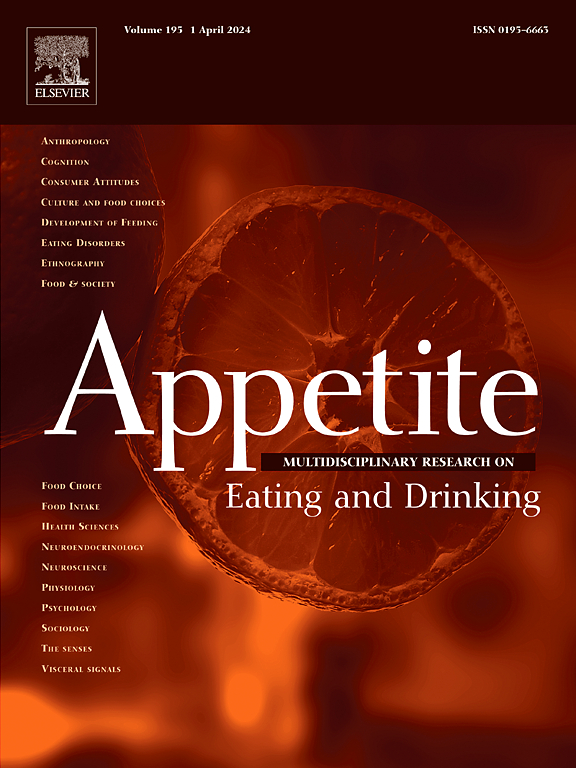Real-time recording: A scoping review of methods to study children's real-time exposure to food and food marketing online
IF 3.8
2区 医学
Q1 BEHAVIORAL SCIENCES
引用次数: 0
Abstract
Today, children are exposed to an unprecedented amount of marketing for high-fat, sugar and salt (HFSS) foods and non-alcoholic beverages. Exposure to HFSS products influences children's food preferences and consumption patterns. As children increasingly live, learn and play online, understanding their exposure to food and food marketing in digital environments has become a growing area of research. Real-time recording of children's devices offers an observational method of assessing their exposure to food and food marketing online. This scoping review aimed to identify and analyse studies employing real-time screen recording methods to study children's online exposure to food and food marketing. Three electronic databases (Scopus, Medline, and Web of Science) were used to identify articles published between January 1, 2010, and July 22, 2024. Articles were included if they collected and analysed real-time screen recordings from children (<18 years) using their own devices. Five studies met the criteria, conducted in Australia (n = 2), Mexico (n = 1), and Canada (n = 2). Findings suggest that research on children's exposure to food and food marketing online using real-time recording of their device use is limited. Included studies revealed inconsistencies in data collection, coding, and exposure definitions. A standardised data collection and coding protocol is needed to enhance the comparability and rigour of future research in this field. More high-quality research using real-time recording to assess children's exposure to food and food marketing online is needed. Future research should prioritise the inclusion of participants from low-income countries and diverse socio-economic and ethnic backgrounds to identify potential inequities in children's exposure to food and food marketing online.
实时记录:研究儿童实时接触食品和在线食品营销方法的范围审查
今天,儿童接触到的高脂肪、糖和盐(HFSS)食品和非酒精饮料的营销数量空前。接触三高食品会影响儿童的食物偏好和消费模式。随着孩子们越来越多地在网上生活、学习和玩耍,了解他们在数字环境中对食品和食品营销的接触已成为一个日益增长的研究领域。儿童设备的实时记录提供了一种评估他们接触食品和在线食品营销的观察方法。本综述旨在确定和分析采用实时屏幕记录方法研究儿童在线接触食品和食品营销的研究。三个电子数据库(Scopus, Medline和Web of Science)被用来识别2010年1月1日至2024年7月22日之间发表的文章。如果文章收集并分析了使用自己的设备的儿童(18岁)的实时屏幕记录,就会被纳入其中。5项研究符合标准,分别在澳大利亚(n = 2)、墨西哥(n = 1)和加拿大(n = 2)进行。研究结果表明,通过实时记录儿童的设备使用情况,对儿童接触食品和在线食品营销的研究是有限的。纳入的研究揭示了数据收集、编码和暴露定义的不一致性。需要一个标准化的数据收集和编码协议,以提高该领域未来研究的可比性和严谨性。需要更多高质量的研究,利用实时记录来评估儿童对食品和在线食品营销的暴露程度。未来的研究应优先纳入来自低收入国家和不同社会经济和种族背景的参与者,以确定儿童接触食品和在线食品营销的潜在不平等。
本文章由计算机程序翻译,如有差异,请以英文原文为准。
求助全文
约1分钟内获得全文
求助全文
来源期刊

Appetite
医学-行为科学
CiteScore
9.10
自引率
11.10%
发文量
566
审稿时长
13.4 weeks
期刊介绍:
Appetite is an international research journal specializing in cultural, social, psychological, sensory and physiological influences on the selection and intake of foods and drinks. It covers normal and disordered eating and drinking and welcomes studies of both human and non-human animal behaviour toward food. Appetite publishes research reports, reviews and commentaries. Thematic special issues appear regularly. From time to time the journal carries abstracts from professional meetings. Submissions to Appetite are expected to be based primarily on observations directly related to the selection and intake of foods and drinks; papers that are primarily focused on topics such as nutrition or obesity will not be considered unless they specifically make a novel scientific contribution to the understanding of appetite in line with the journal's aims and scope.
 求助内容:
求助内容: 应助结果提醒方式:
应助结果提醒方式:


